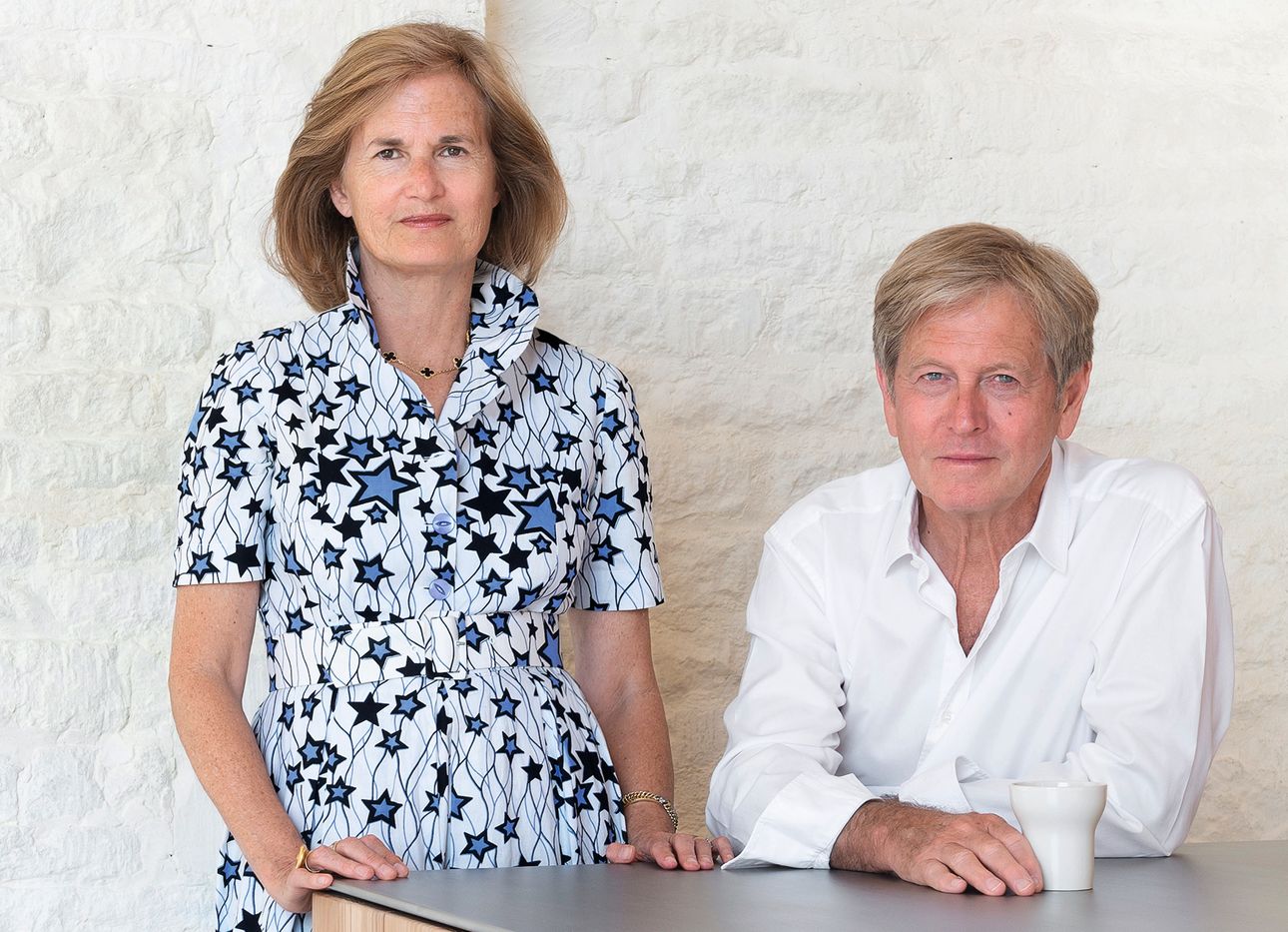
What Catherine and John Pawson Cook at Home in the English Countryside
Nine years ago, interiors specialist Catherine Pawson saw a real estate listing for a 17th-century estate in rural Oxfordshire. With its sprawling fields, a farmhouse, horse stables, and a pond, the home offered solace from the city of London, where Pawson lives in Notting Hill with her husband, John, the celebrated British architect. Despite the property’s ramshackle state, they bought it, and spent the next five years transforming the premises into a pastoral retreat where they could entertain family and friends—often, over refined, low-key meals made by Catherine.
One hundred of the dishes the Pawsons have enjoyed at their remote refuge feature in the new book Home Farm Cooking (Phaidon). The recipes focus on fresh produce and a spare method of fixing food (perhaps informed by John’s style of stark, Japanese-inspired minimalism), brought to life by a family’s passion for communing over meals. We recently phoned the couple at their farm to find out how it’s impacted their approach to preparing and consuming food.
How has living on the farm changed the way you eat?
Catherine: It’s made us increasingly aware of the changing seasons. Any day you go outside, something new has popped up. Eating is far more dependent on a given time of year than it ever was before. This led us to arrange the recipes in the book according to the seasons.
What recipes in the book are of particular importance to your family?
Catherine: The fish [dishes] and the roast chicken, which is stuffed with herbs, butter, and preserved lemons underneath its skin. It’s the comfort foods. I also invited chefs to contribute some of their best-loved meals. [Israeli-British chef and restaurateur] Yotam Ottolenghi shared his recipe for a roast chicken and three-rice salad, which is an absolute family favorite as well.
John: Right. It’s a very merry, vibrant book, and everything in it is delicious. I’m happy to put up with the mess and color in it.
You discuss buying, making, and eating food in a manner that “respects the connection between field and fork.” What does that look like for you?
Catherine: Like many people, we aim to eat locally and seasonally as much as possible. When food comes straight from the field, that’s the moment when things taste their absolute best. I try to grow as much as I can—I love to grow broad beans and rhubarb—but that’s a work in progress. Everything here is a learning curve. We’re very urban people and it’s funny to now be in this super-rural area. The property is home to my first garden, and [tending] it is an enormously rewarding thing to do.
Do you see a connection between cooking and place—specifically, the built environment?
John: Architecture is all about what goes on inside of a space. So you try to make places that work for whatever is going on, whether it’s a church or a kitchen. The hearth is the center of the home, and cooking is such a central part of that. We both come from families where mealtimes were important.
Catherine: John likes everything to be focused, well-prepared, and ordered. Each meal is a ceremony.
You’ve spent the last year living on the farm with your kin. How has their constant presence impacted the way you think about the daily ritual of eating?
John: When will you ever spend a year concentrated every day with your grown-up children? The book allowed us to concentrate on the menus of family meals. “When’s it ready?” has been their usual contribution.